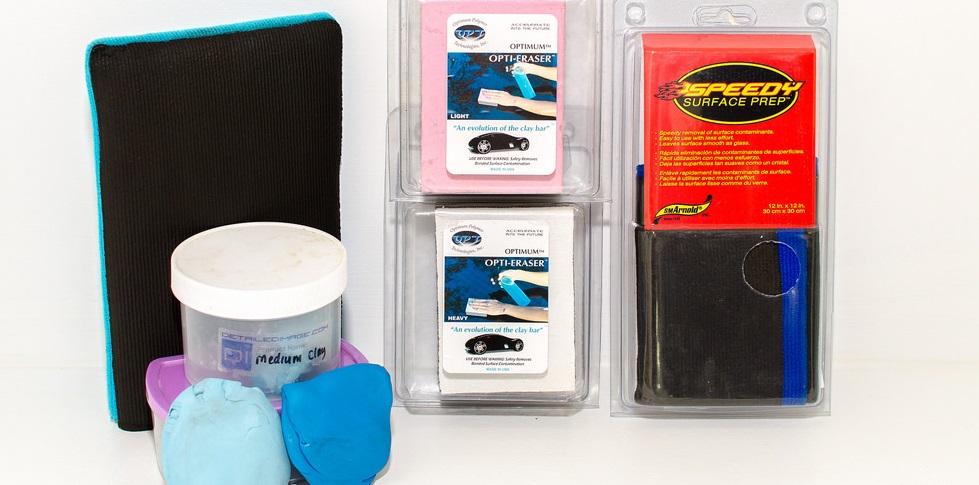Properly cleaning and decontaminating your vehicle is an important part of the detailing process. With many new products available on the market, this is becoming an even more detailed process with more steps. When trying to implement new products into your routine, it can be difficult to understand when to use them. A very common question, for instance, is “Do I use Iron X before or after detailing clay?” In this article I will give a brief overview of some of the many decontamination products available on the market as well as a brief description of their intended use, and in Part 2 of this article I will discuss the general order of operations for each phase of the decontamination process.
Tar, Sap and Bug Removal
Photo: Stoner Tarminator Aerosol Can
Stoner Tarminator and CarPro Tar X are two of the most common products used for removing tar, bug, and sap buildup. These products are simply sprayed onto the effected area, and the solution will work to loosen the buildup from the surface making it much easier to wipe or rinse away. These chemicals make this type of task much quicker and easier than most manual types of decontamination (i.e. clay) for tar removal.
Iron Removal
Photo: 1 Gallon Iron X (Lemon Scent)
CarPro Iron X is perhaps the most common iron removal product on the market, and for good reason. Iron X works to quickly and easily remove bonded iron particles (also known as fallout or rail dust). Simply spray Iron X liberally onto the entire vehicle, and the chemical will react with any iron particles and dissolve them from the surface. The chemical changes from clear to purple as it reacts, so this is a very easy reaction to see on lighter colored vehicles. Beware of the smell, as it is far from pleasant, but the results make it tolerable.
General Bonded Contamination Removal
Photo (from left to right): Light Blue Medium Grade Clay, Blue Fine Grade Clay, Fine Grade Nanoskin Wash Mitt, Light & Heavy Opti-Erasers, Medium Grade Speedy Surface Prep Towel
Detailing clay is traditionally used to remove other bonded contamination from a vehicle, however with the increase in synthetic clay substitutes, there are now many more options that perform the same type of job. The NanoSkin Autoscrub line consists of a set of wash mitts (fine and medium grade), pads that attach to a DA machine (medium and fine grade), as well as a decontamination towel. Each of these Nanoskin products perform the same job as traditional detailing clay, however they often produce results much quicker than normal clay. Also, these synthetic clay bars can be used time and time again, where a traditional clay bar will get dirty and may need to be discarded after just a few uses. I will also add that these synthetic clay alternatives have been known to leave behind light marring that is especially noticeable on darker paint, which is why I only recommend using these products if you intend on polishing afterwards. Do not let this turn you away from these products as the time savings is dramatic and in my opinion, far outweighs the potential risk of marring, especially since the marring is typically easily removed with a light polish.
Part 2 of this series will explain what order to use these products in to achieve the best results in the least amount of time!
Buy Products From This Article
Purchase the products used in this article individually or in one convenient package here!
